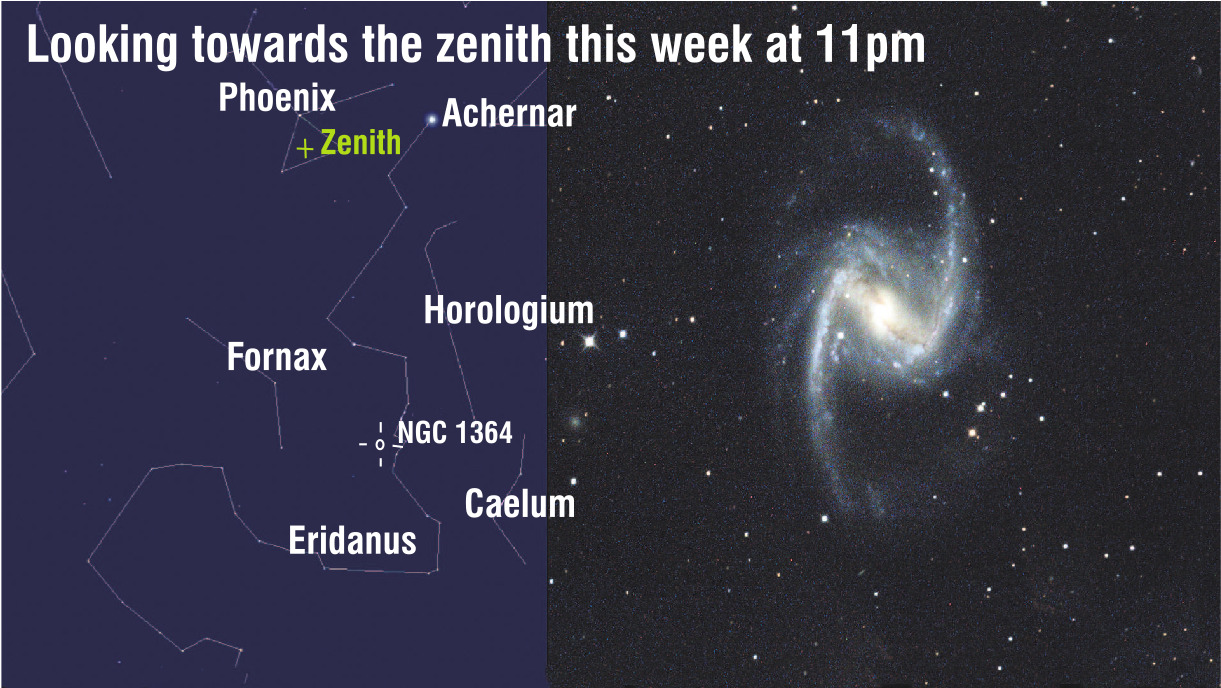

With last quarter moon occurring on Sunday, the early part of the night gives us the best chance of success because moonlight won’t interfere with our quest.
We begin our journey by locating the star Achernar. It is easy to find since it is close to the overhead point (zenith) at about 11pm. Achernar means "end of the river" in Arabic, and the star really does mark the southernmost extent of a constellation Eridanus (the river) that meanders across the sky.
Incidentally, Eridanus is surrounded by some truly obscure constellations, including Horologium (the clock), Caelum (the Chisel) and Fornax (the Furnace). We have to thank the French astronomer Nicholas Louis de Lacaille for the names of these constellations. They were included in his catalogue of southern stars, published in 1763.
The best way to find NGC 1365 is to follow the line of stars making up Eridanus and then scan your binoculars towards the spot indicated on our chart. Look for a dim smudge surrounding a brighter "star", which is actually the core of the galaxy.
While NGC 1365 looks dim through binoculars, through a telescope it is magnificent. A few weeks ago I pointed one of the telescopes at the University of Canterbury’s Mount John Observatory towards NGC 1365 and obtained this week’s accompanying image.
It is possible to pick out the galaxy’s beautiful spiral arms as well as the distinct "bar" that channels gas towards the core of the galaxy fuelling waves of star formation.
Astronomers estimate the distance to this galaxy as more than 56 million light-years and that its diameter is more than 200,000 light years.
It is thought that viewed from afar, our own galaxy the Milky way would look quite similar to NGC 1365.











